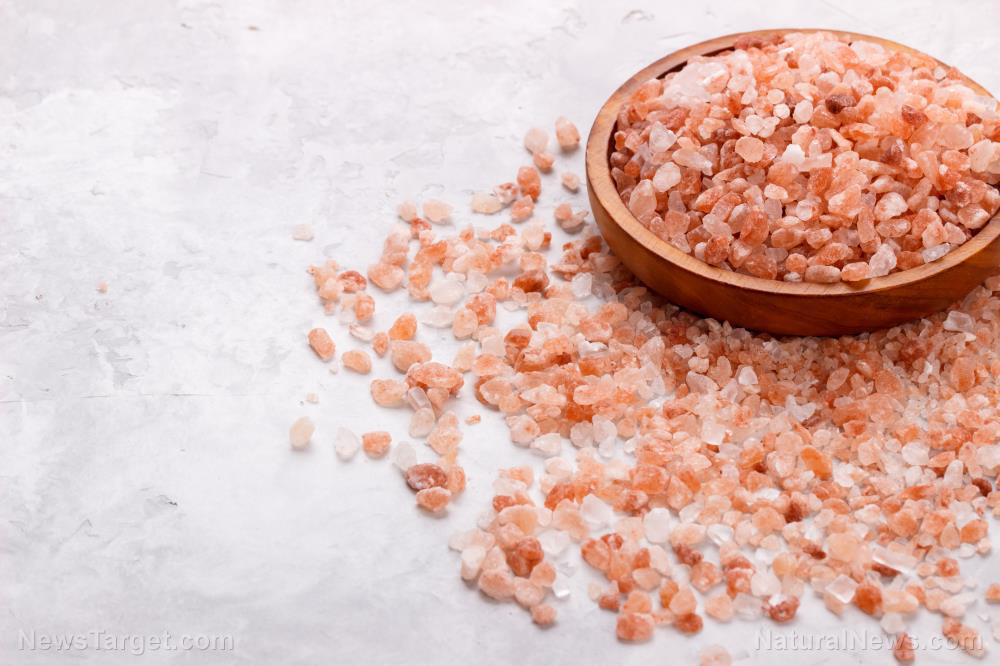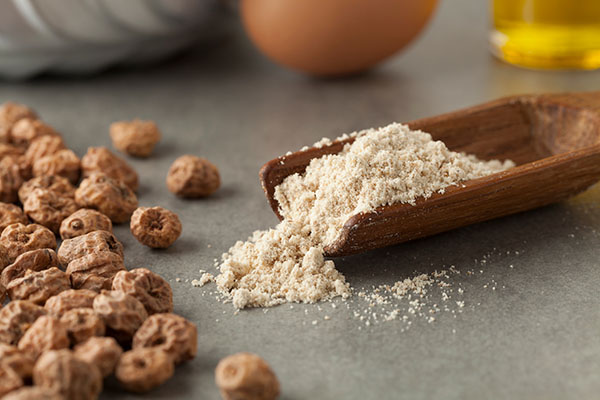
Advertisement
Salt is a widely used seasoning. But if you’re watching your sodium intake, instead of using table salt, try switching to pink Himalayan salt, an alternative that contains less sodium and offers some benefits.
Pink Himalayan salt, an alternative to table salt
Pink Himalayan salt is a type of salt that comes from the Punjab region of Pakistan, near the Himalayas. It is believed that pink Himalayan salt is the purest salt on Earth.
Pink Himalayan salt is chemically similar to table salt and contains up to 98 percent sodium chloride. The rest consists of trace minerals like calcium, magnesium and potassium.
These minerals give the salt its beautiful light pink color and they’re the reason why Himalayan salt tastes different from regular table salt
You can use pink Himalayan salt just like common salt:
- As a cooking ingredient, such as for marinades or soups.
- For seasoning sweet or savory dishes. Try sprinkling pink Himalayan salt over popcorn or top a chocolate cake with salt to give it a crunchy texture.
- Use a pink Himalayan salt block to cook and serve steak, seafood or other dishes. As you cook, the salt block retains heat and imparts flavor to the dishes.
Outside the kitchen, you can use pink Himalayan salt instead of bath salts. Another option is to buy lamps and candleholders made of pink Himalayan salt.

Why you need salt
Anything in excess is bad for you, but your body needs salt because it contains sodium and chloride.
Sodium is an essential trace mineral and your body needs this for various reasons:
- Salt supports the contraction and relaxation of muscles.
- It helps your nerves send impulses.
- It helps maintain proper fluid balance and prevents dehydration.
- Salt helps prevent low blood pressure
Studies suggest that consuming salt can reduce the risk of infection and get rid of harmful bacteria.
In one animal study, researchers reported that salt may have a positive effect on symptoms of depression.
Pink Himalayan salt health benefits
While seasonings like pink Himalayan salt are often used sparingly, they offer some health benefits.
It’s a natural alternative to regular table salt
Table salt is often heavily refined and contains anti-caking agents to prevent clumping, such as sodium aluminosilicate or magnesium carbonate.
On the other hand, pink Himalayan salt is less processed and doesn’t contain additives.
It helps you stay hydrated
You need sodium to maintain proper fluid balance. If you need help staying hydrated, add a pinch of pink Himalayan salt to your meals or drinks to help your body achieve optimal fluid balance and prevent dehydration.
It is beneficial for people watching their sodium intake
While pink Himalayan salt and regular table salt both consist of percent sodium chloride, the former is a great option if you want to manage your sodium intake.
Pink Himalayan salt has larger crystals than table salt so it contains less sodium per teaspoon. It also has a saltier flavor than table salt, so you can use less pink Himalayan salt to achieve the same taste.
Safety considerations before using pink Himalayan salt
Pink Himalayan salt is generally safe to use, but here are some things to consider before incorporating it into your regular diet.
Iodine intake and iodine deficiency
Your body needs the mineral iodine to maintain proper thyroid function and cell metabolism. Natural sources of iodine include dairy, eggs, fish and sea vegetables.
Iodized salt is another source of this trace mineral. An estimated 75 percent of households in America use iodized salt.
While pink Himalayan salt naturally contains some iodine, it probably contains less iodine than iodized salt. If you have iodine deficiency or are at risk of deficiency, get iodine from a different source instead of using pink Himalayan salt.
Monitor your sodium intake
Sodium is an essential mineral, but you need to closely monitor your intake of any type of salt since consuming too much sodium can have negative side effects.
If you have heart, kidney or liver issues or are following a sodium-restricted diet, you still need to monitor your sodium intake and limit your use of pink Himalayan salt.
Even if you’re a healthy adult, you still need to monitor your sodium intake. According to a 2016 report from the Centers for Disease Control and Prevention, more than 90 percent of children and 89 percent of adults consume more than the recommended amount of sodium.
Consuming too much sodium can cause health issues
The 2015 to 2020 Dietary Guidelines for Americans suggest consuming less than 2,300 milligrams (mg) of sodium or one teaspoon of regular table salt per day.
If you have high blood pressure, limit your sodium intake to 1500 mg per day. Consult your dietitian to determine dietary changes that can be made to limit your sodium intake.
Salt contains 40 percent sodium. If you’re monitoring your sodium intake, you also need to know how much sodium is in certain amounts of salt.
However, a lot of people consume more sodium than what’s recommended. If you consume too much sodium, your kidneys try to remove the excess through urine.
If your kidneys can’t remove enough sodium, it begins to build up in the fluid between cells, or the interstitial fluid. When this happens, both water volume and blood volume will increase, putting additional strain on your heart and blood vessels.
Several serious health issues are linked to high sodium intake, such as:
- Heart disease
- High blood pressure
- Kidney disease
- Liver damage
- Osteoporosis
- Stroke
Additionally, consuming too much salt might contribute to autoimmune diseases like lupus, multiple sclerosis, psoriasis and rheumatoid arthritis because it overstimulates your immune system.
Findings from a 2015 study suggest a direct link between salt intake and obesity. According to experts, a one-gram-per-day increase in salt intake is associated with an increase of over 25 percent in obesity risk among both adults and children.
While pink Himalayan salt is a healthy alternative to regular table salt, you still need to control your sodium intake to maintain your overall well-being.
Sources:
Advertisements







